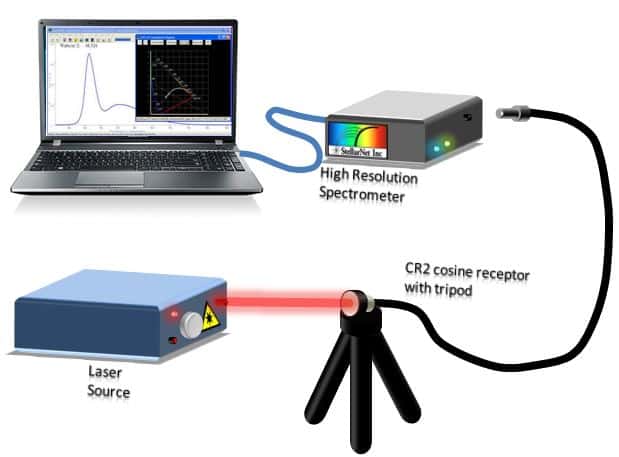

These cookies help provide information on metrics the number of visitors, bounce rate, traffic source, etc. Because he's using just a tiny drop of each of the colloidal quantum dot inks (which have only recently been developed) the cost all 195 drops is only on the order of a few dollars.Analytical cookies are used to understand how visitors interact with the website. Right now, Bao's spectrometer is about the size of a quarter, and he says the underlying CCD sensors he uses can be bought online for less than a dollar a pop.
#PRO TOOLS SPECTROMETER WINDOWS#
Later, a computer can compare the data from all of the windows and reconstruct what wavelengths made up the original light. When light hits each window and travels through, the underlying sensor records how the light changed. (That sensor, called a CCD sensor, is what your phone's camera uses to pick up light.) Each of the 195 windows is made of a material called colloidal quantum dots, and each "absorbs certain wavelengths of light, and lets others go," says Bao. As if making micro-sized stained glass windows, Bao prints a tiny grid of 195 different-colored liquid inks directly onto a flat sensor. It's expensive, too, because accurate spectrometers require high-precision components and delicate alignment.īut Bao's spectrometer works in a much simpler way. This setup, because it involves complex moving pieces, is a total pain to shrink down in size. They diffract incoming light, then push it through a mechanically movable slit to see which exactly which wavelengths of light fit through which slits. And if you understand which materials leave which fingerprints, you can use light alone to find out what something is made of.īao says most modern spectrometers are made in more or less the same way.

Today, we know this happens because the atomic or molecular makeup of everything that either gives off or reflects light leaves an indelible fingerprint. Depending on the source of the light-say, a candle or the sun-that rainbow spectrum would change. The way spectrometers work goes back to the 17th century, when Issac Newton showed that a prism could break up white light into distinct bars (technically wavelengths) of different colored light. "I think that's one of the most attractive results of our research: is already so close to a real product." Printable Detectors But performance-wise, even at this preliminary stage, our spectrometer works very close to what's currently being sold in the market," Bao says.

"Of course we still have a lot of room for improvement. "That's what I'm really hoping for, seeing them in cellphones in the very near future."

They report the research today in the journal Nature. Because of the tool's simple design and its need for only an incredibly small amount of the inks, Bao says, his spectrometer only requires a few dollars worth of materials to make. Today, Jie Bao, a physicist at Tsinghua University in Beijing, China, has just discovered a fascinating way to make them smaller, lighter, and less expensive than we ever thought possible.īy using tiny amounts of strange, light-sensitive inks, Bao and his colleague Moungi Bawendi-a chemist at MIT-have designed a working spectrometer that's small enough to fit on your smartphone. Yes, right alongside the microscope, the optical spectrometer-an instrument that breaks down the light that something reflects or emits, telling you what its made of-is one of the most ubiquitous tools in all of science. They're on NASA spacecraft flying around Saturn's moons right now. We use them to spy on exoplanets, diagnose skin-cancer, and ID the makeup of unknown chemicals.


 0 kommentar(er)
0 kommentar(er)
